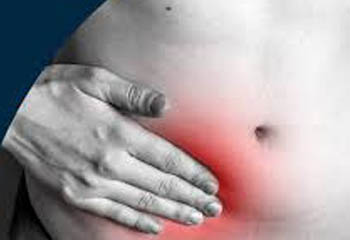Laparoscopy of Gall Bladder, Appendix
What is the gallbladder?
Gallbladder is a pear-shaped organ attached to the under surface of the liver. Its main function is to collect and store bile (a digestive liquid) produced by the liver. After eating, the gallbladder contracts and releases the bile. The bile is carried via a small tube called the cystic duct and then larger tubes called bile ducts into the small intestine where it helps in the digestion.
How is laparoscopic cholecystectomy performed?
It is important to note that laparoscopic cholecystectomy is a major operation performed under general anaesthesia. The surgeon passes a cannula (a narrow tube) into the abdomen in the region of the umbilicus. A telescope connected to a camera is passed inside the abdomen through the cannula. The camera is connected to a television monitor so that a magnified view of the patient's internal organs appears on the screen. The surgeon and his team conduct the operation by observing the television screen. The surgeon then inserts other cannulas and passes long, thin instruments inside the abdomen through them. Using these instruments the gallbladder is separated from its attachments and is removed through one of the openings. After removal of the gallbladder, the small incisions are closed with a few stitches.
What happens after laparoscopic cholecystectomy?
The patient does experience some amount of pain for about 12 to 24 hours after laparoscopic cholecystectomy depending on individual tolerance. Also, some nausea and vomiting is not uncommon in the first 12 hours. Patients are always given medications to relieve the pain and take care of the nausea. Usually, the patient is allowed to drink fluids within 6 to 8 hours of surgery and is able to have meals from the day after surgery. Activity is dependent on how the patient feels, but all patients are encouraged to get up and walk as soon as they are comfortable. Most patients go home within a 48 hours after laparoscopic cholecystectomy as compared to five to seven day following the traditional open operation. Some patients, particularly the elderly and those with other medical problems like diabetes may have to stay in the hospital a little longer. In general, patients recover completely within 7 to 10 days.
Laparoscopic Appendicitis Surgery is a surgical treatment to remove appendix, performed to treat Appendicitis. Appendectomy is one of the most commonly performed surgical procedures in the world.
The appendix is a small, protruding pouch-like structure which sits in the lower abdomen at the junction of large and small intestines. In some cases the appendix may get infected, inflamed & can rupture. If not surgically removed appendicitis can cause severe life threatening complications.
Signs & Symptoms of Appendicitis vary from person to person. It's important that the patient should consult a doctor as soon as possible as more is the delay more are the chances of appendix getting ruptured. Generally appendix can rupture within 48-72 hours after the symptoms start appearing.
The surgeon makes three small incisions in the abdomen. A port (nozzle) is inserted into one of the slits, and carbon dioxide gas inflates the abdomen, which allows the surgeon to see the appendix more easily. A laparoscope is inserted through another port; it looks like a telescope with a light and camera on the end so the surgeon can see inside the abdomen. Surgical instruments are placed in the other small openings and used to remove the appendix. The area is washed with sterile fluid to decrease the risk of further infection. The carbon dioxide comes out through the slits, and the sites are closed with sutures or staples and covered with glue-like bandage or Steri-Strips.



